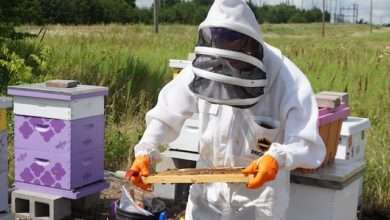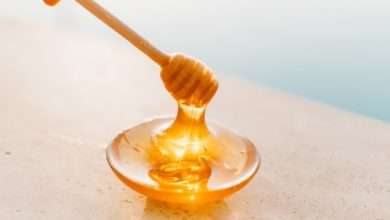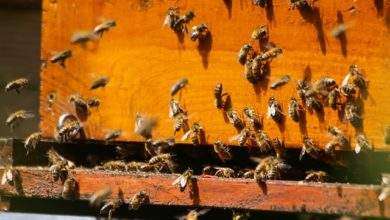When is the Best Time to Harvest Honey?
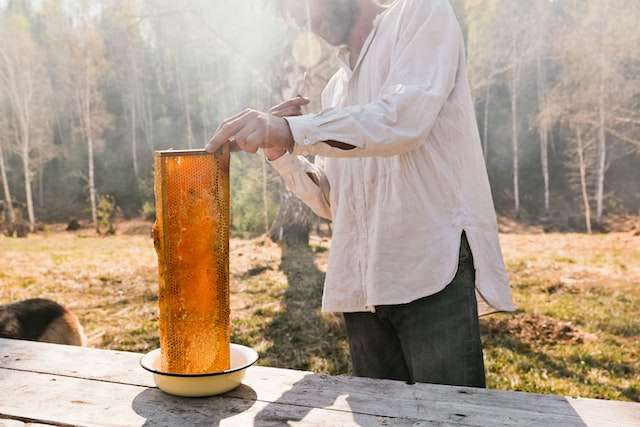
Beekeeping is a rewarding and fulfilling activity that takes time and effort to become truly experienced in. One of the most important aspects of this job is harvesting the honey from beehives. Many beekeepers opt to harvest the honey to use for themselves or give away as gifts.
However, when is the best time to harvest honey? This article will explore the best time to harvest honey, the benefits of harvesting at the right time and what should be taken into consideration ( climatic/weather conditions).
Factors to Consider When Harvesting Honey
Harvesting honey is a delicate process that requires careful planning and execution. As a beekeeper, you want to ensure that your hive thrives and produces the best quality honey possible. To achieve this, you must consider several factors before harvesting your honey. In this chapter, we will discuss the critical factors to consider when harvesting honey.
- Seasonal Changes in Climate and Availability of Nectar
The availability of nectar is a crucial factor to consider when harvesting honey. Bees collect nectar to produce honey, and the more nectar available, the more honey they will produce. The availability of nectar is affected by seasonal changes in climate.
During the spring and summer when the weather is warm, there are plenty of flowers and plants producing nectar, making it the best time to harvest honey. However, during the fall and winter, the amount of nectar produced decreases, making it difficult to harvest honey during this period.
- Bee Behavior
Bee behavior is another critical factor that you need to consider when harvesting honey. Bees become defensive when their hive or honey is threatened, and this can lead to stinging and aggressive behavior. As a beekeeper, you need to understand the behavior of bees to know the best time to harvest honey and the appropriate protective gear to wear.
- Honey Production
The amount of honey produced by your bees is another factor to consider when harvesting honey. The amount of honey produced is affected by several factors, including the size of the hive, the availability of nectar, and the health of the bees.
You need to ensure that your bees have enough honey to sustain them through the colder months before harvesting honey. It is also crucial to harvest honey at the right time to ensure optimal production.
Spring Harvesting Time: Early Honey Harvesting and Its Benefits and Risks
Spring is a season of abundant growth and renewal, and for beekeepers, it is also a time of harvesting honey. As the flowers bloom, bees buzz around, collecting nectar and pollen to make honey.
As a beekeeper, you need to know when and how to harvest honey during springtime to ensure a good yield and quality honey for your customers.
Overview of Conditions During Spring
Spring is typically characterized by its warm weather, sunny days, and abundant rainfall. During this season, you will notice that the nectar flow is more consistent and plentiful.

Bees are busy foraging for nectar and pollen, and the hive is full of bees and honey. This is the perfect time to harvest your honey, especially if you want to ensure the highest quality of your honey yield.
Benefits of Early Honey Harvesting
Early honey harvesting is beneficial for both bees and beekeepers. For beekeepers, early honey harvesting allows for a greater yield of honey, and it also helps to prevent the honey from becoming too thick and difficult to process.
By harvesting early, you are also reducing the risk of pests and diseases that may affect your hive. Additionally, early honey harvesting can help to alleviate congestion in the hive by creating more space for bees to store nectar and produce honey.
For bees, early honey harvesting means less weight to carry, so they are more productive in terms of foraging and pollination. It also ensures that their food source is secure since honey is gathered before it runs out.
Potential Risks of Early Honey Harvesting
While early honey harvesting is beneficial, it also comes with potential risks. One of the major risks is that you may take too much honey too soon, leading to the death of your bees due to starvation. Be sure to leave enough honey behind for your bees, especially if the weather turns cold or there is a lack of nectar flow.
Another risk is that your honey may not be ripe enough, leading to a lower quality of honey. Bees store honey in cells, drying it out and reducing its moisture content. The higher the moisture content, the less stable the honey is and the more likely it is to ferment. If you harvest too early, you risk harvesting honey with a higher moisture content.
Summer Harvesting Time
Summer is the perfect time for honey harvesting. During this season, flowers are in bloom, and the bees are busily gathering nectar and pollen from a variety of sources. As a beekeeper, summer is the time to reap the rewards of your hard work.
- Overview of conditions during summer
Summer is a season characterized by hot temperatures, long days, and plenty of sunshine. The weather conditions during the summer are ideal for bees to work and forage for nectar. With extended daylight hours, the bees have more time to go out and collect nectar, which they will use to make honey.
During the summer, it is essential to keep your hives hydrated. Bees need water to regulate the temperature inside the hive, and also to thin out honey for consumption. Therefore, it’s essential to ensure that there’s a water source nearby. Additionally, you should monitor the hives for pests and diseases and make sure they have proper ventilation to keep them cool.
- Benefits of summer honey harvesting
Summer honey harvesting has numerous benefits. For starters, bees produce honey in abundance during this season. The longer days and great weather mean that the bees have more time to gather nectar, resulting in a bountiful honey harvest.
The honey produced during the summer has a unique flavor and aroma. Since the bees collect nectar from different flowers during this season, the taste and fragrance of the honey are distinct from other seasons.
Summer is also an excellent time to expand your hive. With all the nectar and pollen available, the bees will be more productive, and their numbers will increase. This expansion can be valuable if you wish to increase your hive’s population or split your hive into new colonies.
- Potential setbacks of summer honey harvesting
Summer honey harvesting also presents some challenges, such as the potential for heat stress on the bees. The heat can make it more challenging for the bees to maintain the proper temperature inside the hive. You should ensure that the hive has proper ventilation to prevent heat stress.
Another potential setback is the risk of robbing, especially if there’s a shortage of nectar in the area. Robbing occurs when other bees invade a weak colony and steal their honey. This can be catastrophic for the colonies involved, and beekeepers should take steps to prevent it.
Fall Harvesting Time
As the summer fades and the leaves begin to change, beekeepers know that it’s time to prepare for fall harvesting. The conditions during this time of year can greatly impact the quantity and quality of honey harvested, making it important for beekeepers to understand the benefits and potential setbacks of fall honey harvesting.
- Explanation of Conditions During Fall
During the fall season, days start to become shorter, with cooler temperatures and less sunlight. This decrease in temperature cues the bees to reduce their activity levels and begin preparing for winter. Bees will spend the early fall collecting nectar and pollen from late-blooming flowers and flowering trees. As the weather continues to cool, the bees will gradually transition to consuming their stored honey to survive the winter months.
- Benefits of Fall Honey Harvesting
Fall honey harvesting can be beneficial for both beekeepers and their bees. Harvesting honey in the fall ensures that the bees have enough honey stored for winter and prevents the hive from becoming overcrowded. It also allows beekeepers to collect honey that has a unique flavor profile, as it is often made from fall blooming flowers and trees.
Additionally, fall honey harvesting is known to have higher moisture content, making it easier for beekeepers to extract and process the honey. This can ultimately save beekeepers time and money when compared to harvesting during other seasons.
- Potential Setbacks of Fall Honey Harvesting
While fall honey harvesting can have many benefits, it isn’t without its potential setbacks. One major challenge is determining the right time to harvest. Waiting too long can result in the bees consuming all of their stored honey, leaving them without enough to survive the winter. Harvesting too early, however, can result in honey that hasn’t fully ripened, leading to fermentation and spoilage.
Another potential setback of fall honey harvesting is the risk of robbing. Robbing happens when other bees or pests, like wasps or ants, try to steal honey from another hive. This can be challenging for beekeepers to manage and can cause damage to the hive and bees.
Factors to Guide Your Decision in Harvesting Honey
One of the most rewarding aspects of beekeeping is harvesting honey. But before you grab your hive tool and start collecting honey, there are a few things you should keep in mind.
- The Importance of Monitoring Bee Behavior Before Harvesting Honey
As a beekeeper, it’s essential to understand your bees’ behavior. Before harvesting honey, you must monitor their behavior. Bees are sensitive creatures, and there are several reasons why they behave differently. For instance, they may be stressed due to changes in weather or hive disturbances. Monitoring bee behavior allows you to determine if it’s the right time to harvest honey.
- Knowing the Signs of Honey Readiness in Your Hive
One crucial factor to consider when harvesting honey is the readiness of the honey. Honey is ready for harvest when the nectar has been gathered, and the water has been evaporated by the bees. But how do you know when your honey is ready?
There are several signs to look out for. An excellent way to check is by examining the frames. If the cells are capped with wax, the honey is ready for harvesting.
You can also use a refractometer to measure the honey’s water content. If it’s between 14-18%, it’s ready to be harvested.
How to Examine Your Hives
It’s also essential to examine your hives before harvesting honey. During your hive inspection, check the brood chamber to ensure there is an adequate supply of honey. The bees need enough honey for the colony to survive winter, and taking too much can harm the hive.
It’s also wise to check for signs of disease or pests that can harm the colony. If you notice any issues, address them before harvesting.
Conclusion
The ideal time to harvest honey is typically late summer when the honey is at its peak. However, this timeframe may vary according to the climate and region. Collecting honey at the right time has many benefits, including having the highest quality honey which is usually the most valuable and it can also bring in more money.
When harvesting honey, beekeepers should also take into consideration the weather and the number of flowers in the area. If the weather is too cold, the honey quality and flavor may be compromised and the amount of flowers in the area can directly impact the amount of honey produced.
By understanding the ideal time and conditions to harvest honey, beekeepers can make sure their honey harvests are successful and profitable.
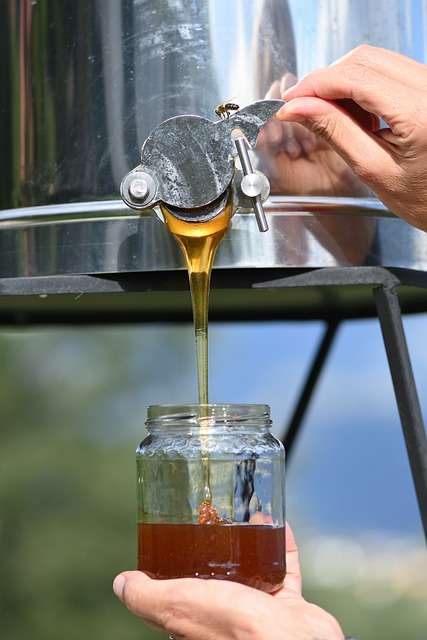
FAQ
What is the best time of the year to harvest honey?
The best time to harvest honey is typically in the late summer or early fall, when the majority of the honeycomb cells in the beehive are filled with capped honey.
How do I know when the honey is ready to be harvested?
- You can tell when honey is ready to be harvested by checking for capped cells on the honeycomb frames. Capped cells are fully covered in wax and indicate that the honey inside is fully mature and ready to be harvested.
What is the best time of day to collect honey?
- The best time of day to collect honey is during a warm and sunny day when the bees are most active and out foraging. This is usually in the mid-morning to early afternoon when the bees have returned from the field and are less likely to become agitated during the harvesting process.
What kind of equipment do I need to harvest honey?
- As a beekeeper, you will need a bee suit or protective clothing, gloves, a smoker, a hive tool, a bee brush, and honey extraction equipment to harvest honey.
Can I harvest honey at night?
- It is not recommended to harvest honey at night as this is when bees are most active inside the hive. The disturbance caused by harvesting at night can lead to agitated and defensive bees that may be more likely to sting. It is best to harvest during the day when bees are out foraging.
What type of clothing should I wear when harvesting honey?
- When harvesting honey, beekeepers should wear protective clothing that covers the entire body, including a bee suit or jacket with a veil, gloves, and boots.
Can I harvest honey without disturbing the bees?
- It is possible to harvest honey without disturbing the bees by using a bee escape or a fume board to move the bees out of the honey supers before harvesting.
How do I extract honey from the honeycomb frames?
- Honey can be extracted from the honeycomb frames by using a honey extractor or by crushing and straining the honeycomb.
How much honey can I expect to harvest from my beehive?
- The amount of honey that can be harvested from a beehive will depend on many factors, such as the size and health of the colony, local weather conditions, and available forage.
How long can honey sit before extracting?
- Honey can sit in the hive for some time before it is extracted, but it is recommended to harvest honey within 2-3 weeks after the honey cells have been capped by the bees. After this, the risk of fermentation and spoilage increases, which can affect the quality of the honey.
How often can I harvest honey from a single hive?
- The frequency of honey harvesting depends on the strength of the bee colony and the local climate. In general, it is recommended to harvest honey once or twice a year to prevent excessive strain on the colony and allow the bees to build up sufficient honey reserves for winter. Over-harvesting can weaken the colony and reduce honey production in the long run.
